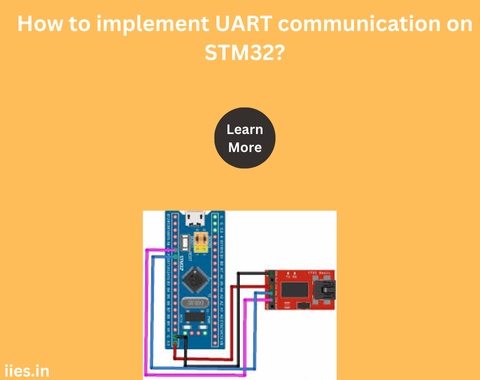
UART, or Universal Asynchronous Receiver/Transmitter, is a widely used protocol for serial communication in embedded systems. It provides a simple and efficient way to exchange data between devices. One of the main advantages of UART is its simplicity, as it requires only two wires for communication: a transmit (TX) wire and a receive (RX) wire. This makes it an attractive choice for many applications where minimal hardware is a priority.
STM32 microcontrollers, developed by STMicroelectronics, are popular in the embedded systems community due to their robust features, flexibility, and performance.
Before we dive into the implementation, you need to set up your development environment. The essential tools are:
You can download STM32CubeIDE from the STMicroelectronics website and install it on your computer. Once installed, you can create a new project for your STM32 microcontroller.
Now that the project is set up with the necessary initialization code, you can start writing the code to implement UART communication.
main.c file.HAL_UART_Transmit function. This function requires the UART handle, a pointer to the data buffer, the length of the data, and a timeout value.HAL_UART_Receive function. This function requires the UART handle, a pointer to the buffer where the received data will be stored, the length of the data to be received, and a timeout value.To test the UART communication, you need a way to visualize the data being sent and received. One common method is to use a USB-to-serial adapter to connect the STM32 microcontroller to a computer. You can then use a terminal program (such as PuTTY, Tera Term, or the Arduino Serial Monitor) to view the transmitted data and send data to the microcontroller.
Implementing UART communication on an STM32 microcontroller involves several steps, from setting up the development environment and configuring the UART peripheral to writing the communication code and testing it. By following this guide, you can establish reliable UART communication for your embedded system projects. The STM32CubeIDE and HAL library simplify the process, allowing you to focus on the application-specific aspects of your project rather than the low-level details of UART communication. With UART, you can easily interface your STM32 microcontroller with various peripherals and devices, making it a versatile tool in your embedded systems toolkit.
Indian Institute of Embedded Systems – IIES